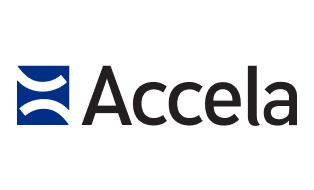The tragic wave of fires that have erupted up and down the West Coast lately have put fire prevention at the forefront of many people’s minds. All combined, over five million acres have burned in the states of California, Oregon, and Washington so far this year. As a former fire service officer and instructor, I’m very familiar with the challenges of fire prevention, the way that they’re evolving, and the role that technology can play in helping solve them.
This week, I had the opportunity to participate in Accela’s virtual annual conference, Accelarate 2020, for a discussion with Jonathan Knight (JK), Chief Customer Officer at Accela, on the role the cloud plays in fire prevention. We talked about how first responders can leverage cloud technology to increase agility, maximize resources, and keep pace with future innovation – and covered several key elements:
The Biggest Myths and Misunderstandings About the Cloud
- The cloud is some sort of “great unknown,” or something that’s different from how people live their everyday lives. In reality, people are using it every day. If you speak to your TV remote, car, phone, or nearly any device in your daily life and the device completes a task in response, you are using the cloud.
- How does the cloud relate to public safety? It’s a critical resource for supporting public safety agencies. There is a lot of pressure on public agencies to operate differently when it comes to data. Agencies now must connect, analyze, and collaborate with new kinds of data across agencies in ways they typically haven’t before. On the other side, the communities these departments serve expect secure operations, data privacy, and operational transparency. Where these two trends meet is in the cloud — being able to leverage modern digital solutions to deliver against mission requirements without having to support all the infrastructure behind it.
Three Waves of the Cloud
A lot of people think of the cloud as one static kind of technology. But, in my experience, we’ve seen a progression of the cloud over time in multiple waves:
- First Wave: This is often the wave people are most familiar with — cheap hardware. Could a public safety agency run its operations more cheaply in someone else’s data center than their own? It was about shaving costs by having other people manage the operational infrastructure.
- Second Wave: The second wave is the cloud as a connection platform that brings together people and processes in ways that don’t depend on infrastructure. A great example is Netflix. Think about the difference between watching TV with a device attached to the wall that requires you to watch a program on a certain day at a certain time versus Netflix. The Netflix approach leverages the cloud as a common platform to bring people together to watch any show they want, when they want, and on any device.
- Third Wave: This is where transformation really takes place. The cloud is now software that brings its own hardware with it. The cloud powers deep capabilities that let you analyze data in new ways, enable much more efficiency, and to draw connections that may be hidden inside the data itself. You should now see the cloud as the platform that powers the public safety mission.
Common Challenges for Fire Departments and How the Cloud Can Help
- One of the things we see as a breakthrough in solving common challenges fire departments face is the model of innovation. For many years in public safety, only the largest agencies had the budget and staff required to drive innovation. The cloud has changed this model completely. Because a department no longer has to manage its infrastructure, every department, of every size can take advantage of an innovative cloud solution . Now, agencies can focus on the mission and solutions that support it, rather than the infrastructure to deliver them. Innovation can now be part of every department’s charter.
- The speed of learning and new capabilities has also increased with the cloud. In the prior world, a company would implement a solution on their own servers, and an upgrade would come two or three years later. When you have a fully-hosted cloud solution, you have the opportunity for your technology partner to deliver new solutions and capabilities quickly and continuously over time. That also means that learnings captured from one department can quickly be introduced as a new capability to support others.
- One of the main benefits of the cloud for public safety agencies is the way information is exchanged. The cloud has enabled real velocity in the way data gets captured, analyzed, and shared. In the past, some agency staff worked in the field and others worked with data behind the scenes, but everyone has a digital component to their roles and is using data. The ability to connect quickly and digitize the data at the start of the process can facilitate collaboration, allow all staff to drive full value from the data, and enable agencies to meet the challenges of today.
To learn more about how Accela’s Fire Prevention Solution can help public safety agencies increase agility and prepare communities for unexpected incidents, visit here.




